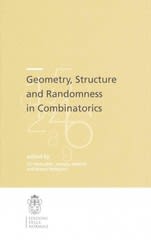Question
Using a sample of 545 full-time workers in the USA, a researcher is interested in the question as to whether women are systematically underpaid compared
Using a sample of 545 full-time workers in the USA, a researcher is interested in the question as to whether women are systematically underpaid compared with men. First, she estimates the average hourly wages in the sample for men and women, which are $5.91 and $5.09 respectively.
- Do these numbers give an answer to the question of interest? Why not? How could one correct for this?
The researcher also runs a simple regression of an individual's wage on a male dummy, equal to 1 for males and 0 for females. This gives the results reported in Table A.
TableA
| Variable | Estimate | Standard Error | t-ratio |
| constant | 5.09 | 0.58 | 8.78 |
| male | 0.82 | 0.15 | 5.47 |
| N = 545 s = 2.17 R2 = 0.26 |
2.How can you interpret the coefficient of 0.82? How do you interpret the estimated intercept 5.09?
3.Explain the relationship between the estimates in Table A and the average wages of males and females.
4.Test, using the above results, the hypothesis that men and women have, on the average, the same wage rate, against the one-sided alternative that women earn less.
Now the model is changed to include ages and educations. The dependent variable is adjusted to the natural logarithm of the hourly wage rate.
TableB
| Variable | Estimate | Standard Error | t-ratio |
| constant | -1.09 | 0.38 | 2.88 |
| male | 0.13 | 0.03 | 4.47 |
| Age | 0.09 | 0.02 | 4.38 |
| Educ | 0.18 | 0.05 | 3.66 |
| N = 545 s = 0.24 R2 = 0.691 |
5.How do you interpret the coefficient of 0.13 for the male dummy and 0.09 for age?
Step by Step Solution
There are 3 Steps involved in it
Step: 1

Get Instant Access to Expert-Tailored Solutions
See step-by-step solutions with expert insights and AI powered tools for academic success
Step: 2

Step: 3

Ace Your Homework with AI
Get the answers you need in no time with our AI-driven, step-by-step assistance
Get Started


